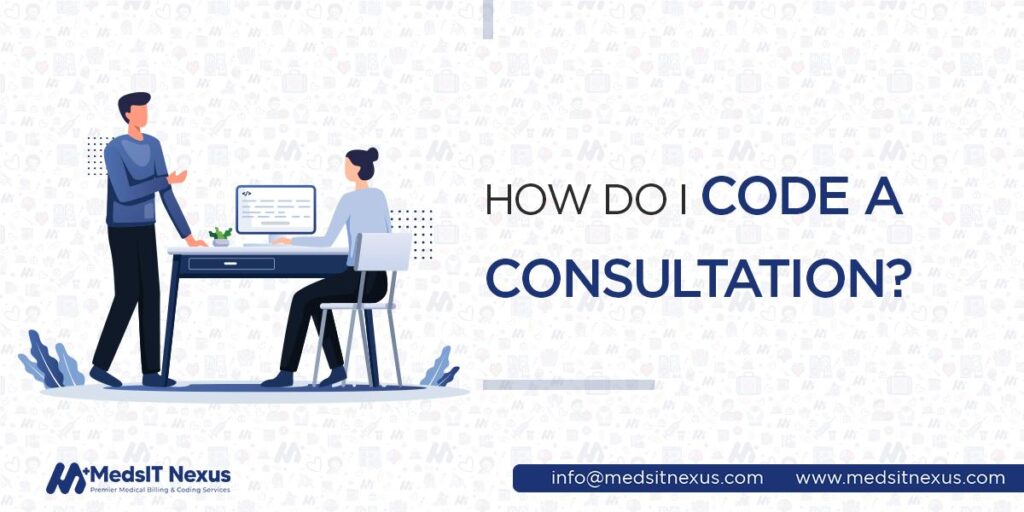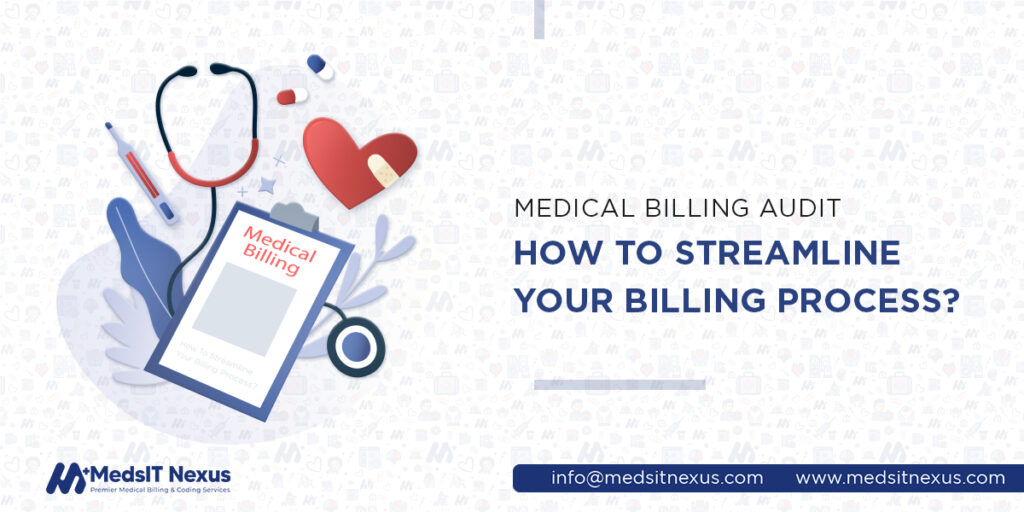How do I Code a Consultation?

As healthcare becomes increasingly digitized, coding has become an essential skill for industry workers. Furthermore, coding is the backbone of revenue cycle management of healthcare industries; therefore, accuracy in this field is the utmost priority. One important aspect of coding is the ability to code consultations properly. Accurately coding consultations ensure proper reimbursement for healthcare providers and help with data collection and analysis to do this task professionally; healthcare organizations always search for experienced coders to overcome all the complexities of this coding. Coding consultations can be complex and confusing, especially for those new to the field. Understanding the basics of consultation coding is necessary to overcome this field’s challenges and increase revenue. This article will explore the basics of coding consultations in the healthcare field and the changes made by CPT in consultation coding.
Coding for Hospital Admission, Consultations, and Emergency Department Visits
Based on the CPT 2006 guidelines, a consultation refers to a medical service where another physician or
a relevant source asks a physician to provide professional advice regarding assessing and treating a
specific health issue. This is the objective criteria for consultation. It comes in different types,
such as In-person consultation, telemedicine consultation, second opinion consultation, group
consultation, and follow-up consultation.
The purpose of the consultation is to obtain an opinion or advice regarding the evaluation or management
of a specific problem.
What Documentation Is Required?
According to consultation coding guidelines 2023 , the 3R must be followed.
Request
The first “R” of consultation codes is the request referring to the process of requesting a consultation
from another physician or specialist. The request may be made by non-physician practitioners such as
nurses or other licensed assistants in healthcare practice. According to AAPC, this request should be in
written form, as a verbal request is not considered a part of the documentation.
The request should include specific information:
- The provider’s name
- Time of the request
- Patient’s name
- A unique physician identification number (UPIN)
- The date
- Patient’s history
- The reason why consult is requested
Render
It denotes rendering a piece of advice or opinion and services rendered by the consultant. However, when coding for the render component, it is essential to include the following:
- The date and time
- The consultant’s name and NPI number
- A description of the services provided
- Any diagnostic tests performed during the consultation
- The duration of the consultation
Report
The report should be detailed and include a comprehensive assessment of the patient’s medical condition and recommendations for treatment. Then it should be returned to the requesting provider, who will use the information to guide the patient’s care.
When coding for the report component, it is essential to include the following:
- The date and time of the report
- The consultant’s name
- NPI number
- A summary of the findings from the consultation
- Any diagnostic test results
When to Bill for a Consultation
When a physician or an authorized entity requests a consultation, it can only be charged as a consultation service. Contrarily, a patient requesting a consultation or a second opinion cannot be billed as a consultation code. Instead, use the appropriate evaluation and management (E/M) code because patient-requested consultations do not meet the definition of a consultation service defined by the Current Procedural Terminology code set.
Changes for 2023: Coding Consultations
The CPT 2023 code sets for consultation services have undergone notable modifications, with specific codes being revised and some being deleted.
Revisions
- The guidelines for consultation services have been updated in 2023 to include “Other Qualified Healthcare Professionals (QHPs),” who can now initiate diagnostic and therapeutic services during the same or subsequent visits alongside physicians.
- The term “Inpatient Consultations” has undergone a revision and is now referred to as “Inpatient or Observation Consultations.”
Deletion
- The healthcare industry has removed the usage of consultation codes 99241 and 99251.
- The guideline for “Transfer of Care” has been removed. Any services that involve transferring a patient’s care to another healthcare provider should be reported using the appropriate codes for new or established patient visits in office/outpatient settings, home or residence services, initial hospital inpatient/observation care, or initial nursing facility care.
Selecting the Appropriate Consultation Code
Three coding systems are used for consultation; CPT, ICD, and HCPCS. Choosing the appropriate consultation code is crucial for healthcare providers and insurance companies, as it can impact reimbursement rates and overall healthcare costs.
Outpatient Consult Codes
99242-99245:
These codes represent consultations requested by another physician or qualified healthcare professional,
ranging
from a brief visit to a comprehensive evaluation and management service. The specific code selected
depends on
the services’ complexity and the amount of time spent with the patient.
99214-99215:
These codes represent an office or other outpatient services, ranging from a brief visit to a
comprehensive
evaluation and management service.
Emergency Department Consultation
When the Patient is Admitted
99242: Office or other outpatient consultation for a new or established patient requires evaluating and
managing
a moderately complex problem.
99243: Office or other outpatient consultation for a new or established patient requires evaluating and
managing
a high-complexity problem.
99244: Office or other outpatient consultation for a new or established patient, which requires
evaluating and
managing a problem of moderate to high complexity.
99245: Office or other outpatient consultation for a new or established patient, which requires the
evaluation
and management of a complex problem and comprehensive history-taking, examination, and medical
decision-making.
When the Patient is not Admitted
Mostly, 99281–99285 codes are used.
Preoperative clearance
ICD-9 codes
V72.8: Pre-operative cardiovascular examination
V72.83: Other specified pre-operative examination
V72.84: unspecified pre-operative examination
ICD-10 codes
Z01.818
Inpatient and/or observation consultation
In the case of inpatient consult coding, the following CPT codes are used:
99252-99255: These codes are used for initial inpatient consultations (only once per admission). The
codes are differentiated based on the complexity of the consultation, with 99252 being the least complex
and 99255 being the most complex.
| 99251 | Problem-focused history Problem-focused exam Straightforward MDM |
| 99252 | Expanded problem-focused history Expanded problem-focused exam Straightforward MDM |
| 99253 | Problem-focused history Problem-focused exam Straightforward MDM |
| 99254 | Detailed history Detailed exam Low-complexity MDM |
| 99255 | Comprehensive history Comprehensive exam High complexity MDM |
99231-99233: These hospital care codes are used for multiple consultations.
99307-99310: These nursing facility codes are also used for multiple consultations.
Split/shared consultations
Split/shared consultations refer to a type of medical consultation where two or more physicians from
different specialties collaborate to provide care for a patient. During a split/shared consultation, the
primary physician sees the patient and performs an initial evaluation. Then, the consulting physician
joins the visit to offer expertise and additional assessment.
The consultation coding will not be used if a physician and non-physician provide a portion of
services;
instead, hospital or office coding will be used.
Modifier Minute: Modifier 32
Now, the most critical point is what modifier is used for consultation. The term “Modifier 32 Mandated
services” is used when a service is requested by a third party, like an insurance company or a
government agency, for a patient. It is a CPT modifier for consultation coding.
For example:
This may happen when the insurer wants a “second opinion” before approving more medical procedures or
when a school demands that all students undergo a medical checkup before participating in sports
activities.
Marshall-Russ, Technical Author -
Healthcare IT & Data Systems Analyst at MedsIT Nexus
Edit Technical documentation, workflow automation insights, and data-driven RCM improvement publications following our standard publication protocols.






